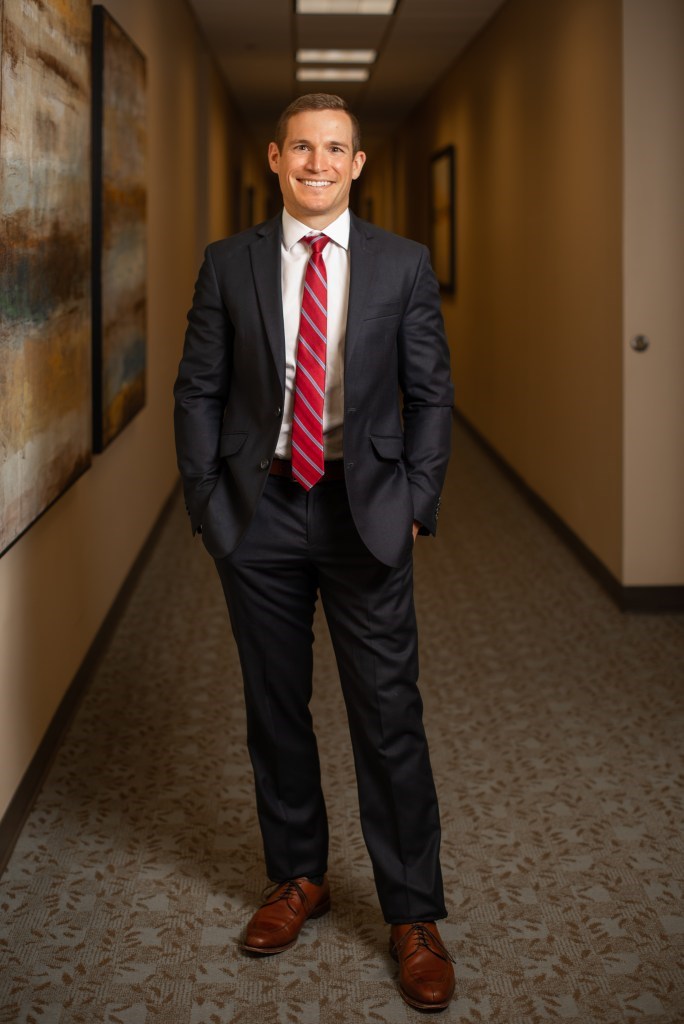At Texas Health Center for Diagnostics & Surgery in Plano, Dr. Peter Derman, a minimally invasive and endoscopic spine surgeon, is giving his patients a new lease on life.
This March, the Bassham family returned home to Dallas from Aruba, finding that COVID-19 had finally struck the United States.
Meanwhile, the spinal injury that Jonathan Bassham had battled for years also struck with a vengeance — with the worst pain he had ever known.
He couldn’t sit for more than 20 minutes. He couldn’t sit to work. He couldn’t sit at dinner. He couldn’t carry anything or drive long distances. In addition, he couldn’t work out — this was a big deal for Jonathan, whose favorite pastime (besides playing with his children and traveling) was going to the gym.
The only relief Jonathan found from the pain shooting down his legs and back was in lying on the ground. He would go to sleep on the living room floor at night because even sleeping in his own bed became too painful.
At 33 years old, this wasn’t the first time Jonathan’s sciatic pain flared up, but he was determined to make it the last.
Jonathan’s pain started in 2017, during a trip to Colorado. Jonathan bent over and twisted his torso to lift a heavy bag. A terrible pain shot through his back and right leg. He soon found out that he had suffered a disc bulge at the base of his spine, pinching off a nerve and causing this searing pain.
The pain over the years would prove near incapacitating — to his mobility and to the active lifestyle the Bassham family thrives on.
Jonathan is a financial adviser, and his wife is a law school professor. They travel extensively and are outside every chance they get. Their 6-year-old daughter and 5-year-old-son do ju-jitsu, and Jonathan helps them practice. Prior to the back pain and sciatica, Jonathan and his kids loved to play-wrestle too.
“What pushed me more toward surgery was when my kids and I realized we couldn’t do the things we loved to do anymore because of my back pain,” Jonathan says.

While Jonathan did all he could to avoid surgery, his physical therapist put him in touch with Dr. Peter Derman, a minimally invasive and endoscopic spine surgeon on staff at Texas Health Center for Diagnostics and Surgery and in practice at Plano-based Texas Back Institute.
A year prior, Jonathan had met with about five other accomplished surgeons, yet did not feel comfortable moving forward with surgery with any of them.
“They’d look at the MRI and x-ray, and immediately say ‘here’s the surgery you need,’” Jonathan recalled. “It felt rushed.”
His meeting with Dr. Derman, however, couldn’t have been more different.
“He asked me my habits, what I liked to do, what I wanted to do in the future,” Jonathan said. “He made sure my symptoms lined up with the scans. I felt like I was able to communicate well with him; he understood where I was today and where I wanted to be tomorrow.”
Dr. Derman emphasized making surgery a last resort; and if it ever became necessary, the surgery itself would be a quick minimally invasive procedure at an award-winning hospital, Texas Health Center for Diagnostics & Surgery (THCDS) in Plano.
This March, after returning from Aruba, Jonathan called Dr. Derman in desperation. They agreed that endoscopic spine surgery was his next step once the COVID-related moratorium on elective surgeries was lifted.
Unlike traditional spine surgery, which can strip and damage muscle tissue around the spine, endoscopic spine surgery (ESS) preserves these soft tissues and is now being dubbed ultra-minimally invasive.
“The damage to the muscle around the spine is a significant reason why people have protracted recovery, longer hospital stays, and the need for opioid or narcotic medications,” Dr. Derman says. “The beauty of endoscopy is that it practically eliminates damage to the soft tissues.”
The surgeon makes an 8-mm incision (less than a finger’s width), through which a small camera about the size of a pencil is inserted. This allows the doctor to see inside the patient’s spine. The surgeon views the live video images on an ultra-high definition screen as tiny tools are used to remove pressure from the spinal nerves within.
These endoscopic techniques allow surgeons to access spinal areas that would otherwise not be accessible without removing bone, allowing them to clean out bone spurs, overgrown tissue, or disc herniations. No screws, no rods, no fusion. The surgery only takes about one hour to complete.
After several telemedicine visits for safety amid COVID-19, Jonathan’s surgery was performed on May 14.
“We have taken numerous precautions to ensure that seeking medical care and surgery are safe,” Dr. Derman says. “It is not a general hospital with COVID-19 patients; it’s a specialty surgical hospital. We test every single patient before their surgery to make sure they are not sick; otherwise, they can’t have surgery in that facility.”
In addition to the ultra-minimally invasive nature of the surgery, patients have minimal exposure to other people as they don’t need to stay overnight in the hospital. Patients are comfortably discharged home about an hour after their procedure.
“I tell my patients to be active after surgery,” Dr. Derman says. “As soon as they feel up to it, they can walk as much as they want – even the day of surgery. Go to the gym, do the elliptical. I’ve had patients up and home in time for brunch. Brunch, after spine surgery!”
Jonathan noted only slight soreness post-surgery and has been out walking every day since May 14th. “I’ve been more sore after a tough workout. The pain was 99 percent gone. Now, I can sit at the dinner table. I can sit in the car. During my fifth week of recovery, we went to Colorado. I was in the car for hours, and I was fine.”
And the kids noticed too.
“Daddy, your back’s getting better,” Jonathan’s son said during a pillow fight. “We can wrestle again!”
“The silly things you don’t think about, that I couldn’t do before, I can do again,” Jonathan says. “It’s amazing.”




